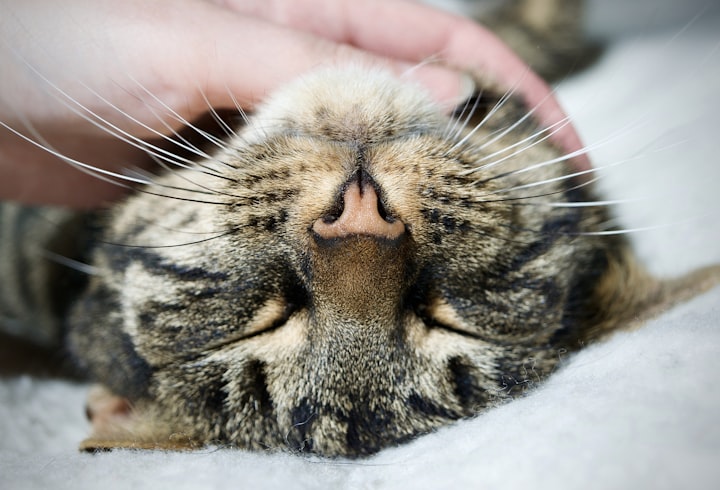Cat Whisker Facts
You've heard all the urban myths about whiskers, now here are the facts.
Have you ever looked at your cat’s cute face and wondered if those whiskers served a purpose, and what that might be? Of course you haven’t, you most likely have one of those really aloof cats that you never see unless it’s trying to claw your eyes out while you are sleeping. Lucky for all of us though, I have a friendly cat and I started to think about this, so I decided to find out more about whiskers and share it with all of you. Perhaps “fascinating” is a bit of a stretch, but it turns out that cat whiskers are pretty remarkable things.
Whiskers – also called vibrissae or tactile hairs – are thicker and more deeply rooted than your cat’s normal hair, and serve several functions. Because whiskers are rich in nerve endings, they are important sensory tools for a cat. Here are five more fun facts I discovered about cat whiskers.
Cats Whiskers Measure an Opening
There are four rows of whiskers on each side of a cat’s muzzle; the top two rows can move independently from the bottom two rows. Because the whiskers on a cat’s muzzle are approximately equal to her body width, they help to determine how wide an opening is. When a cat puts its head through the opening, she’s checking out the surroundings while simultaneously doing a “whisker check” to see if she can fit through the hole. If the whiskers brush the sides of the hole, the cat knows her body won’t fit.
Whiskers Aren’t Just on the Face
Cats typically have about 24 whiskers on their muzzle. Additionally, there are shorter whiskers above the eyes, on the chin, and on the back of the cat’s front legs just above the paws (these are called carpal whiskers).
Cat Whiskers Help with Hunting
A cat’s eyes have difficulty focusing on objects that are very close to them. The carpal whiskers aid them when hunting by helping to determine movement of prey captured in her paws. The carpal whiskers also help determine if their prey is in the right position for the fatal bite.
The whiskers on a cat’s eyebrows can protect the eyes when they are hunting in grassy or bushy area. These whiskers will trigger a protective blink to prevent being poked in the eye by a branch or other object.
Cat Whiskers Detect Changes in Air Flow
A cat’s whiskers are so sensitive that they can detect changes in air currents, which helps them maneuver in the dark. Inside your house, the cat’s ability to feel the air flow around objects helps them avoid bumping into things. Outdoors, being able to determine changes in the air around them can help them escape from predators.
Cat Whiskers are Extremely Sensitive
The area around your cat’s whiskers has a generous supply of nerves and blood. This makes the whisker tips very sensitive. As such, cat whiskers should never be trimmed or pulled on – doing so is cruel and can cause great pain. Some cats’ whiskers are so sensitive that eating or drinking from a small bowl wherein their whiskers touch the sides can be painful. A better option is a wider bowl or a plate.
Cat whiskers do fall out once in awhile, but they will grow back. Years ago I decided to save the whiskers I found around the house, and I taped them to a cat face drawing and posted it on the fridge. Sure, it was silly, but it was also interesting to see how many whiskers I collected from my three cats in just one year.
Did you know these facts already or were they something new for you? Let me know in the comments section!






Comments
There are no comments for this story
Be the first to respond and start the conversation.